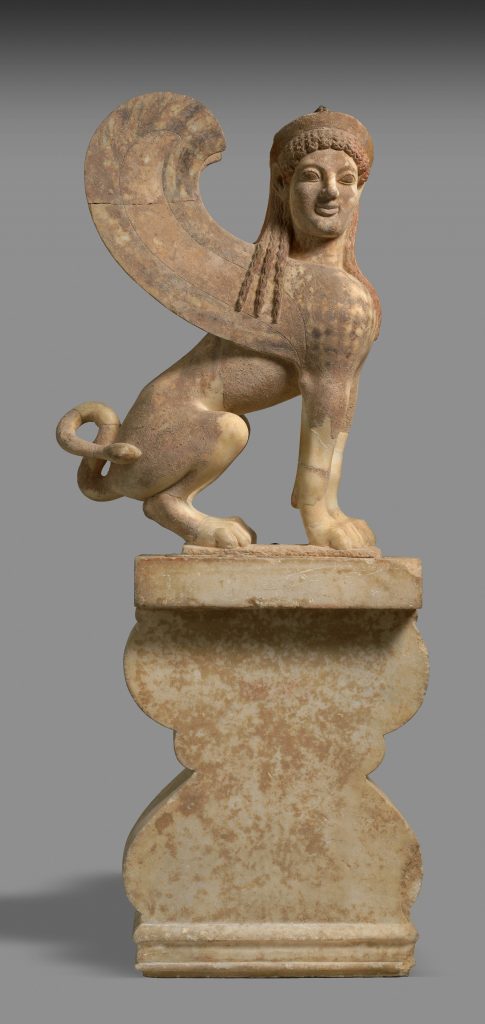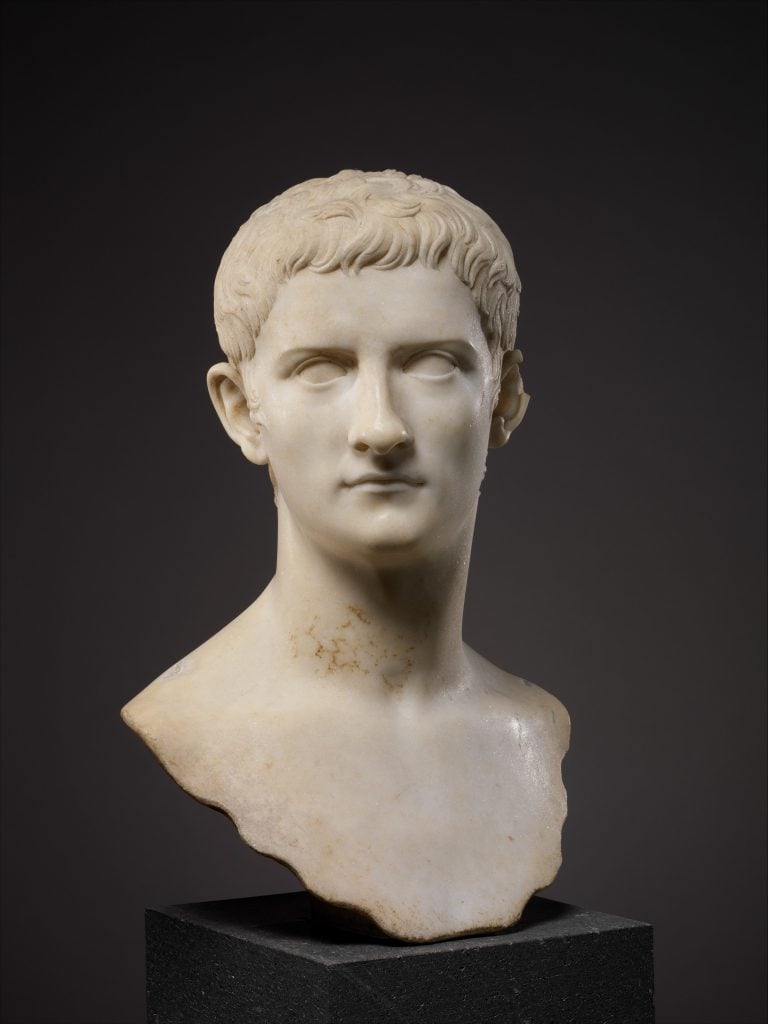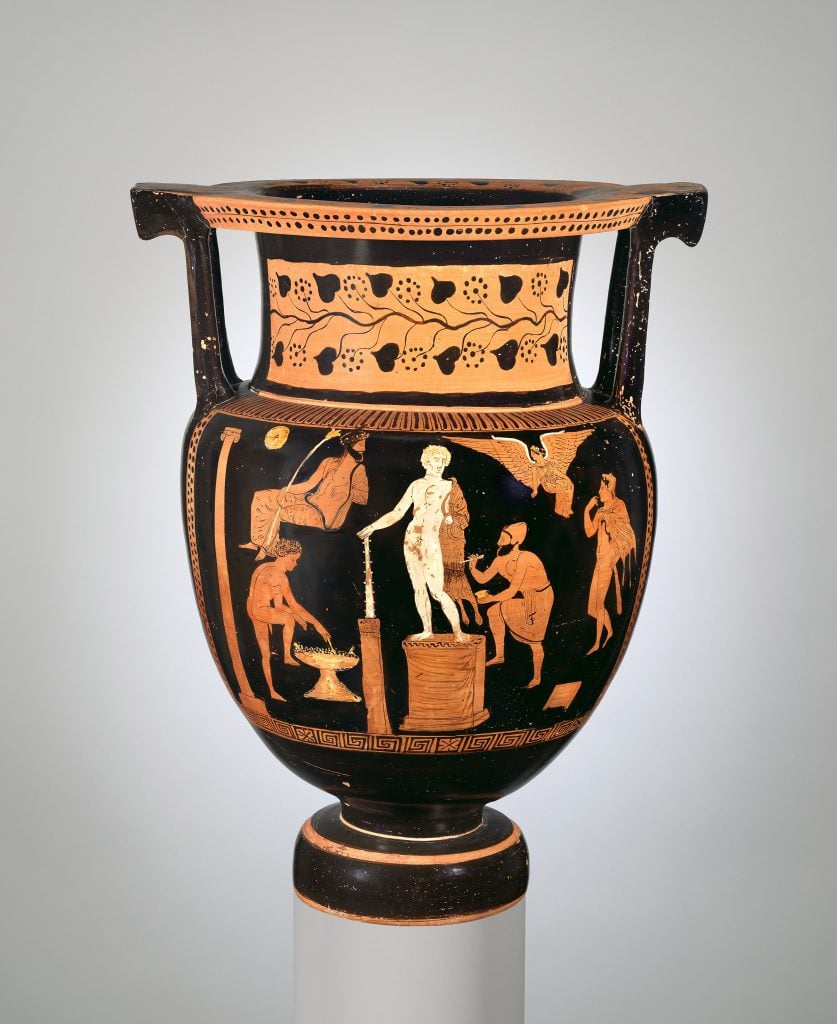The Metropolitan Museum of Art in New York has announced an exhibition exploring the use of color in ancient Greek and Roman sculpture, presenting pieces from the Met’s collection as they would have originally been seen in antiquity. Installed through the museums’ Greek and Roman galleries, “Chroma: Ancient Sculpture in Color” opens on July 5 and explores polychromy, the ancient practice of painting sculpture and architecture.
“This innovative exhibition will activate The Met’s displays of ancient Greek and Roman art like never before by displaying colorful reconstructions of ancient sculptures throughout the galleries,” Max Hollein, the Met’s director, said in a statement.

Marble capital and finial in the form of a sphinx. Photo: courtesy of the Metropolitan Museum of Art.
Although today we only see plain carved stone and marble, many pieces of ancient sculpture were once vividly painted, giving these works life-like features. The Met’s exhibition aims to bring wider attention to this practice by placing 15 full-size fully painted recreations—produced by Dr. Vinzenz Brinkmann, head of the antiquity department at the Liebieghaus Sculpture Collection in Germany, and Dr. Ulrike Koch-Brinkmann—alongside 40 works from the museum’s collection. Among them is a richly colored version of the Met’s Archaic-period Sphinx finial that serves as the centerpiece of the show.

Marble portrait bust of the emperor Gaius, known as Caligula, 37–41 C.E. Courtesy of the Metropolitan Museum of Art.
In addition to explaining why sculptures and architectural elements were painted in this way at the time they were made, the show will examine how polychromy conveyed meaning in both the Greek and Roman civilizations, how the practice was received in later periods. It also reveals how experts find and identify color on such ancient works in order to recreate their original painted patterns, using cutting-edge technology such as 3D imaging and art historical research.

Column-Krater ca. 360–350 B.C.E. Photo: courtesy of the Metropolitan Museum of Art
A symposium will also be held at the museum in March 2023, which will bring together curators, conservators, and scientists to discuss polychromy, and the results will be published by the Met.
“It is truly an exhibition that brings history to life through rigorous research and scientific investigation and presents new information about works that have long been in The Met collection,” Hollein said.
Follow Artnet News on Facebook:
Want to stay ahead of the art world? Subscribe to our newsletter to get the breaking news, eye-opening interviews, and incisive critical takes that drive the conversation forward.








